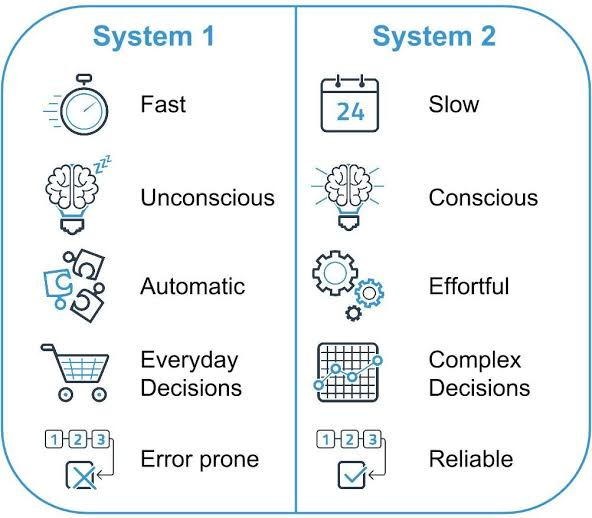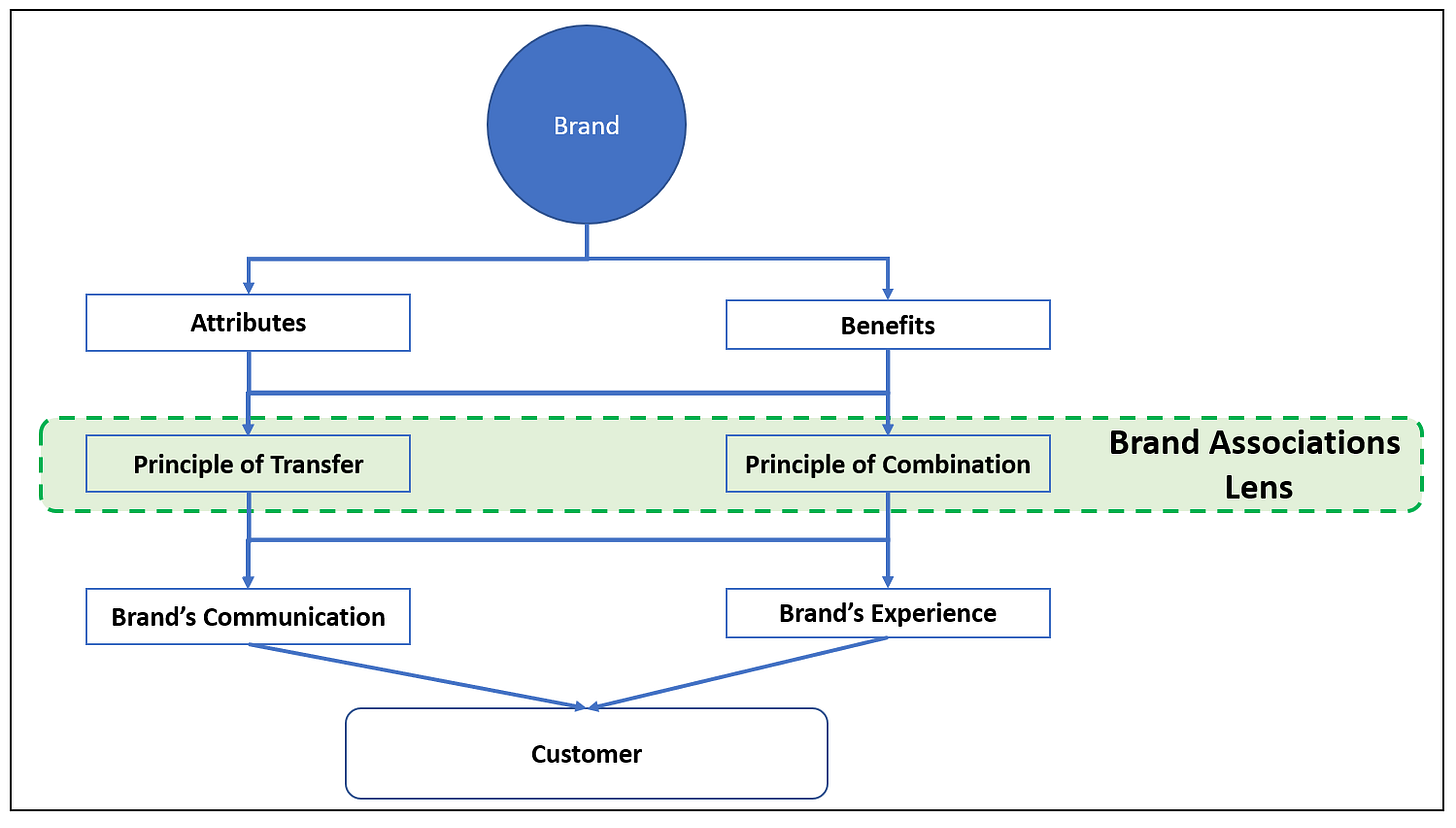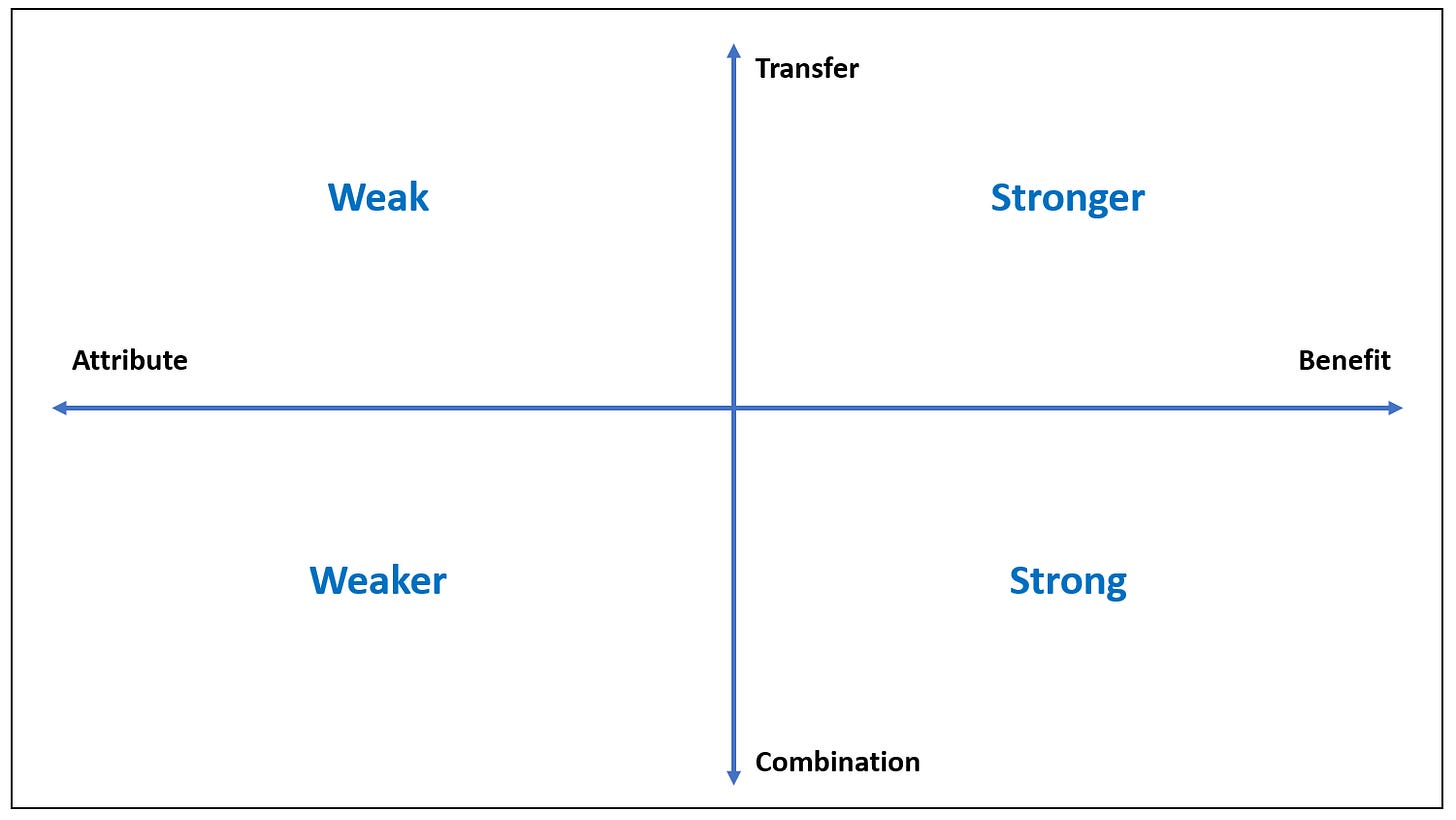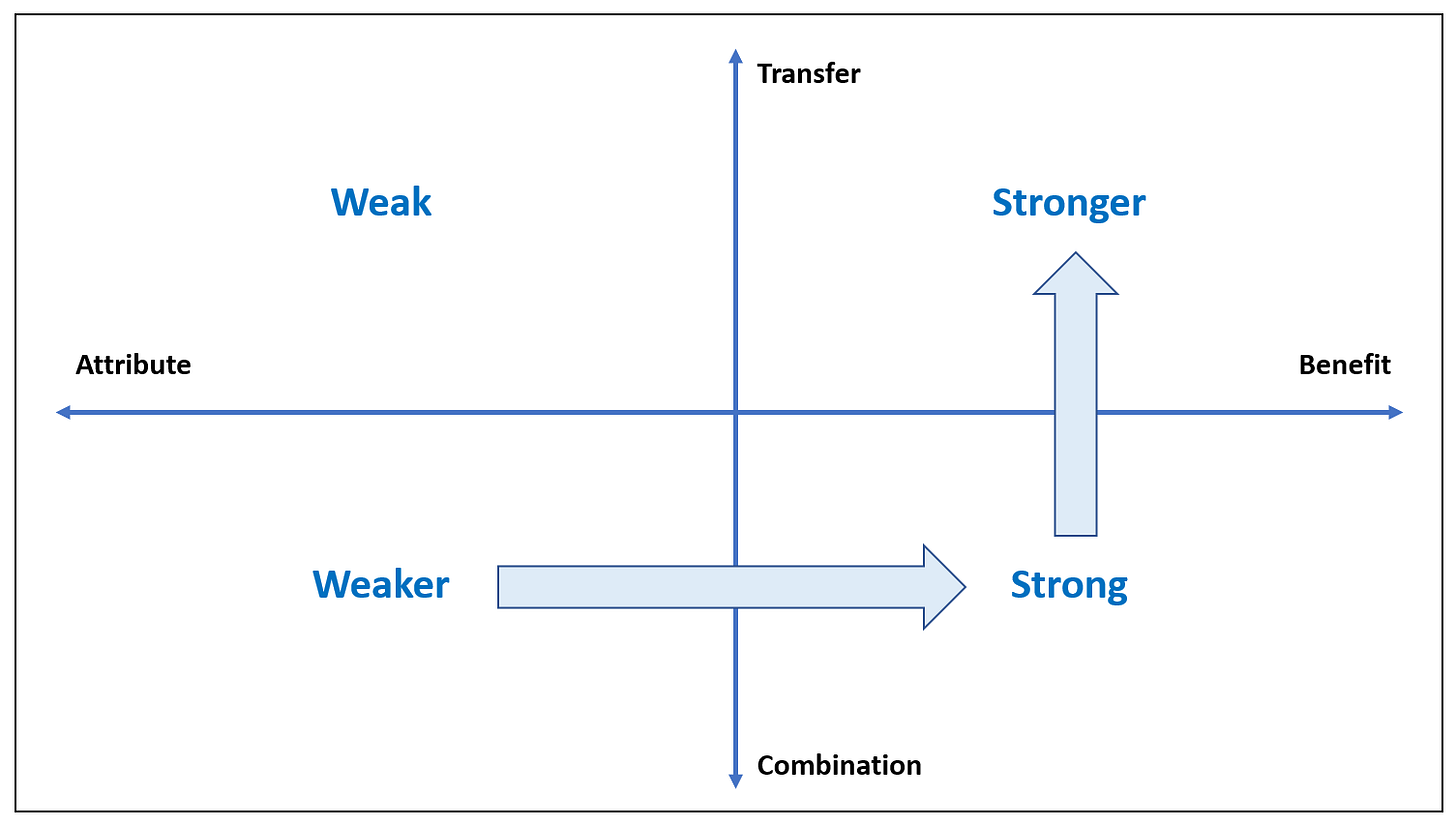Build strong brands using brand associations
An actionable framework to build & measure brand associations
Let’s do a small exercise. I will say a word(s) and you will think of the first brand/product which comes to your mind. Ready?
Hotel.
Did you silently say Trivago?
One more time.
Electric car.
Did you mumble Tesla?
Noodles.
Umm… Do I hear Maggi?
Thirsty
I am sure some of you said water, some said coke and some said Heineken. (Limca once had this place in our minds, which it unfortunately squandered).
The point I am trying to make is that there are brands which have created a significant association in our mind with our need states (emotional/social/functional). Some of these associations are so strong that in a certain need state, only that specific brand comes to our mind and nothing else.
This is called creating Brand associations and as conventional branding literature works, this is what Brand building activities should achieve. Brand associations provide brands with a significant competitive advantage. Over a period of time, strong brand associations bring down the marketing costs and reduce customer’s post purchase dissonance.
However, there are a very few brands which have been able to achieve strong brand associations with specific need states and even lesser brands these days which are trying to achieve the same.
This article is an effort to distil my own understanding of brand associations into an actionable framework for creating brand associations.
How brand associations work
Daniel Kahneman (Nobel laureate) promulgated the concept of 2 systems of thinking in his seminal book Thinking Fast and Slow. Simply put, the brain has 2 systems, one is a fast system which processes inputs automatically and there is a slow system which processes inputs more deliberately. This is shown in the image below.

There are some interesting facts to note here:
System 1 always fires first whenever there is a stimulus. System 1 passes the stimulus to System 2 and on being accepted it becomes a belief in our mind. When System 1 cannot understand the stimulus, it invokes System 2 to process the stimulus
System 1 works on heuristics - It could be prolonged exposure to certain stimulus or expertise gained over time. The key point is that the response to the stimulus is almost instantaneous
System 1 is prone to making errors like any other heuristics-based system. The nature and context of errors can actually be defined to a great degree for various cohorts of people
Companies use this unique psychological underpinning to create mental availability of their brands in the minds of the customers. Through a variety of mechanisms (shared later in the article), companies can create sufficient impressions and exposure, where in response to a specific stimulus, System 1 triggers a choice of their brand, compared to the competitive alternatives. And this happens automatically or habitually. The brand associations become so strong that when a need is felt, System 1 rarely invokes System 2 for any evaluation and thus, the brand becomes central to meeting the need.
Some important points
Brand association is not positioning. Positioning is a type of brand association where the brand gets mapped to a specific value in customer’s mind. However, associations are more far ranging across attributes, benefits and attitudes
One brand will typically have many associations in our mind. It includes basic things as the brand’s colors to more evolved things such as brand’s emotional benefit
Much of existing marketing literature paints an incorrect picture of brand associations. Brand associations are painted as thoughts which pop to mind when a person thinks about a brand. It is in fact the other way around. The brands which pop to mind as a response to a thought/stimulus such as color (green color billboard = Oppo), sound (sound at the start of an episode for Netflix Originals), smell (coffee smell = Starbucks), personality (Pug = Vodafone), etc.
Brand associations need to drive brand salience and brand preference. This implies that when a customer gets a stimulus of a need state, your brand should be in the consideration set (brand salience) and should be the preferred brand for purchase (brand preference). And this should happen automatically as part of System 1
An empirical framework for building brand associations
In the existing marketing literature, there are a variety of threads on brand associations, out of which the essays/papers from David Aaker and Kevin Lane Keller are most relevant & important.
Branding expert David Aaker, says that “Anything linked in memory to a brand” is a brand association. He suggests 11 types of brand associations: Product attribute, Intangibles, Customer benefits, Relative price, Use/Application, User/Customer, Celebrity/Person, Lifestyle/Personality, Product class, Competitors and Country/Geographic area.
Similarly, another branding expert Kevin Lane Keller, (as part of his famous Customer-based Brand Equity model) talks about strong brand associations creating a brand image in the minds of the customer. He defines brand associations as informational nodes linked to the brand node in memory that contain the meaning of the brand for consumers. He further says that brand associations are of three types: Attributes, benefits and attitudes.
There are two issues here:
The types of brand associations mentioned above are actually the levers which can be used to create brand associations (such as a celebrity for a brand or anti-competitor positioning for a brand) and not the actual brand associations
These essays/papers do not provide a method/framework to create brand associations
Based on observation of a variety of brands and the tactics these brands have used to create brand associations, I propose a simple conceptual framework which can be used to create deeper brand associations. This framework is shared below:

Let’s start from the top.
Brand
A brand is essentially a collection of attributes and benefits in the minds of the customers. These attributes and benefits are the basic levers which can be used to create brand associations in the minds of the customers. But for that, these attributes and benefits need to pass through a Brand Association Lens.
Brand Association Lens
The Brand Association Lens is a conceptual step between the brand’s attributes/benefits and their communication/experience by the customers. The lens provides 2 principles which can be used to strategically create brand associations.
Principle of Transfer
This principle says that to create brand associations, the brand’s attributes or benefits are linked to an object, which has an existing impression in System 1 and an associated belief in System 2.
This allows the beliefs associated with that object to get transferred to the attribute/benefit of the brand, creating a brand association in customers’ minds. The transfer happens through brand communication and/or brand experience.
The principle of transfer is the theoretical underpinning to the use of celebrity endorsers in advertisement. For instance George Clooney is known to have a suave, clean, intellectual, personality. Hence, a brand which needs to transfer these associations to its brand, uses George Clooney in its advertisements (luxury watches, perfumes, first class seats in airlines, etc.).
This principle also explains why some of the celebrity endorsements end up creating very weak brand associations.
For instance, in India, a tile company uses Akshay Kumar (Indian celebrity Bollywood actor) in its advertisements. The advertisements get noticed due to Akshay’s celebrity status and the media money the company is pumping.
However, it did not create any lasting brand associations in customers’ minds as Akshay’s existing impressions in System 1 trigger the belief of being funny, action-oriented, versatile, etc. in System 2. However, none of these impressions, when transferred to a tile company make sense, weakening the brand associations.
Principle of combination
This principle says that if two thoughts are consistently communicated in tandem, then these thoughts start getting linked to each other in System 1 and when one thought is evoked, the other fires automatically. For instance, money and happiness are communicated together to us since a very early age, which leads to an association of money with happiness in our minds.
Brands can use this principle by identifying one thought and installing their brand’s attribute/benefit as the other thought and then communicating the same to the TG consistently over a period of time. The non-brand thought could be a place, a feeling, time of the day, an action taken by a person, etc.
The difference from the principle of transfer is that there is not transfer of belief happening between two thoughts and these two thoughts could be completely unrelated to each other. Hotel - Trivago is one example and Snickers for evening hunger pangs is another.
Some important points
Brand associations can only be built in the minds of interested customers. Interest is like a filter here and works at category level. If a person is not interested in knowing about coffee, then all efforts by Starbucks to create brand associations in the mind of such customer will fail
These principles can be used together by companies to create brand associations. These are not either-or
The lens itself will not create associations. It only provides a direction to build the association. Once the attributes and benefits pass through this lens, then the resultant associations are built through the communication and experience. Here communication means advertisement, press articles, social media posts, etc. Experience means using the brand such as packaging, use of the product, signing-up on a website, etc.
It is easier to take up an impression+belief combination which is so far not occupied by any brand and create an association, compared to a combination which as one or more existing brands already present
Not all brand associations are created equal
It is apparent that like all other associations in our minds, different brand associations have different strength in our minds. The strength of a brand association reflects the efficacy of the association leading to brand’s purchase.
The framework below further demystifies the relative strength of brand associations based on whether the association is pinned on a benefit or attribute and if it uses principle of transfer or principle of combination.

Some examples
Airtel fastest network (attribute + combination)—> weakest brand association (there is hardly any association of Airtel being fastest network)
Thums up (Transfer + benefit) —> Stronger brand association (Thumps up is the No 1 drink)
Surf’s stains are good (Benefit + Combination) —> Strong brand association (Surf is killing it in the Indian market)
It is important to note here that it is possible, through brand communication and brand experience, it is possible to enhance the brand association if:
Brand communication and experience is consistent: Colors, tonality of communication, same creative, same brand benefit, same brand ambassadors, etc.
Brand communication and experience is at high frequency: This explains why brands which are used more frequently have a stronger brand association than brands which are used infrequently
This allows weaker brand associations to become strong (Vodafone pug and Vodafone) and strong associations to become stronger (Kitkat + Break).

Rohit
PS: If you liked reading this article, please do subscribe to the newsletter by clicking on the button below. It is free and takes only 10 seconds.



